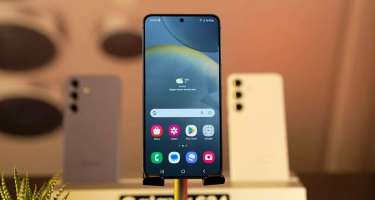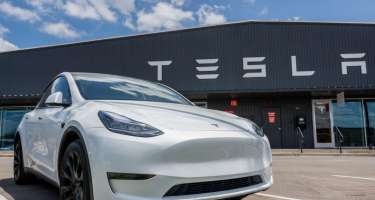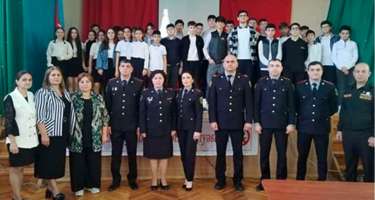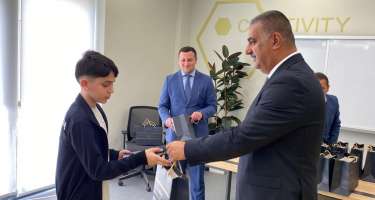Every year, TIME selects the best inventions that are making the world better, smarter and—in some cases—a little more fun. Below are given some of the inventions included in this year’s list.
The levitating lightbulb
Since he was a child, Simon Morris has been obsessed with making objects float in midair. At one point he even managed to turn a skateboard into a hoverboard, though as he recalls it, “I couldn’t ride on it.” Now he’s applying that same passion to Flyte, a lightbulb that relies on electromagnetism to levitate and spin, and on resonant inductive coupling—a technical term for wireless power transmission—to shine. Morris sees his design as a seamless blend of science and art honoring both pragmatists, like Thomas Edison, and dreamers, like Nikola Tesla. And consumers appear to agree: Morris says Flyte has sold so well since its official January launch that his team is planning to introduce a whole ecosystem of floating products, including a planter, Lyfe, which debuted in June. “We’re just scratching the surface,” he says.

Shoes that tie themselves
Almost everyone who sees Back to the Future wants three things: a time-traveling DeLorean, a working hoverboard and a pair of self-lacing shoes. Now, thanks to Nike, the shoe dream is a reality. When wearers press a button near the tongue, the HyperAdapt 1.0s automatically tighten and loosen around their foot. And although this technology may sound frivolous, it’s not just for kicks: simplified shoe fastening could give athletes an edge during competition, and it’s especially useful for people with impaired motor function. “We’re already seeing powerful feedback” from the disabled community, says Tinker Hatfield, Nike’s vice president of design and special projects.
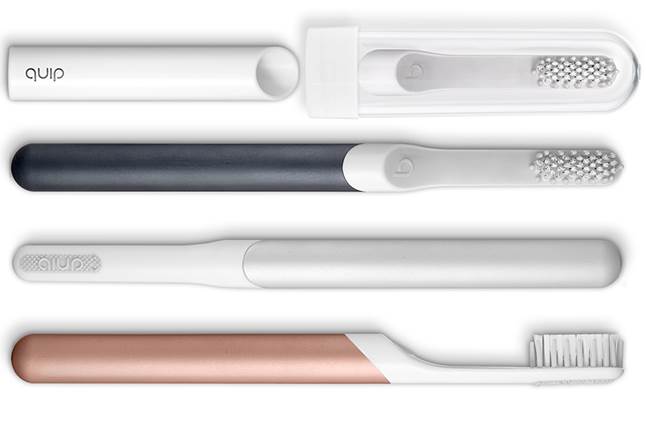
The headset leading to a virtual revolution
In order to access the most cutting-edge virtual reality, people typically have to shell out thousands of dollars—not just for a headset (like the $800 HTC Vive), but for a computer that’s powerful enough to support it. Sony’s PlayStation VR, by contrast, is designed to work with a console that millions of people already own: the PlayStation 4. That’s a boon for gamers in search of what Sony engineer Richard Marks calls “the most intense, most extreme” action, as well as casual consumers, who now have an easier way to experience VR.
The ultimate alarm clock
It’s hard to believe that an alarm clock—the cruel, clunky gadget that jolts you awake and ruins your morning—could not only be beautiful but also improve your sleep. That it could gauge the temperature, humidity, light and even air quality in your bedroom to help you engineer a perfect sleep environment. That it could monitor your sleep cycles and wake you when you’re least likely to feel groggy—all thanks to simple voice commands. Indeed, Sense (and its companion pillow sensor) is no ordinary alarm clock. It took hundreds of prototypes to get it right, says James Proud, founder and CEO of Hello, which makes Sense. Early adopters report that using the small glowing orb feels almost as natural as crawling into bed. That was key, says Proud, who adds, “Nobody wants to introduce complexity into their lives, least of all when it comes to sleep.”
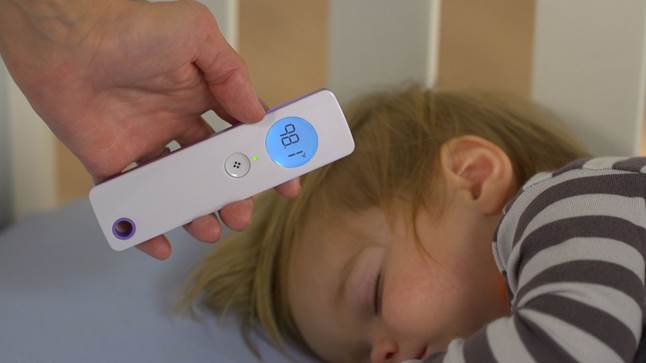
Tires that spin in every direction
As companies race to develop self-driving cars, Goodyear is reinventing their wheels. Its spherical concept tire, which debuted in March, allows cars to move in many new directions, including sideways into a parallel parking space and at specific angles and speeds to counteract slippery surfaces. The key, says Sebastien Fontaine, an industrial designer at Goodyear, is magnetic levitation: whereas traditional tires are bolted to cars, the Eagle 360s hover beneath them, free from “the limits of [traditional] steering.” To be sure, these tires won’t hit pavement anytime soon: they’re meant for self-driving cars that are likely at least five years away. In order to shift the status quo, says Fontaine, “we need different companies working with us, together.”
A sleeker, smarter toothbrush
When it comes to dental hygiene, most Americans are slackers: 1 in 2 don’t brush twice a day, and 3 in 4 don’t replace their bristles every three months, no matter how many times they’re warned of the risks (which include cavities and gum disease). “We needed to get people to care a lot more,” says designer Simon Enever. So he and partner Bill May set out to make brushing feel more rewarding. The result is Quip, a simple, affordable, battery-powered toothbrush that works like its counterparts from Oral-B and Sonicare—a two-minute timer vibrates every 30 seconds, reminding users to switch positions—but looks and feels like something you’d find in an Apple store; customers can even opt for a matte metallic finish. “It’s a nicer experience,” says Enever, who adds that he’s already working on his next design challenge: getting you to floss.
A stronger softer hair drier
James Dyson has famously streamlined all kinds of air-centric appliances, most notably vacuums and fans. Now he has set his sights on the hair dryer. Unlike traditional models, which Dyson dismisses as “noisy, heavy and not that fast,” the Supersonic does its job with remarkable efficiency. It’s quiet, thanks to a tiny, jet-engine-like motor that reaches 110,000 revolutions per minute (making it ultrasonic and therefore inaudible to the human ear). It’s fast, thanks to a design that multiplies air flow. And it’s consistently gentle, thanks to a sensor mechanism that keeps hot blown air at one of three exact degree settings. This is hair drying as Dyson thinks it should be, even if it comes at a cost. “We never design down to a price,” he says.
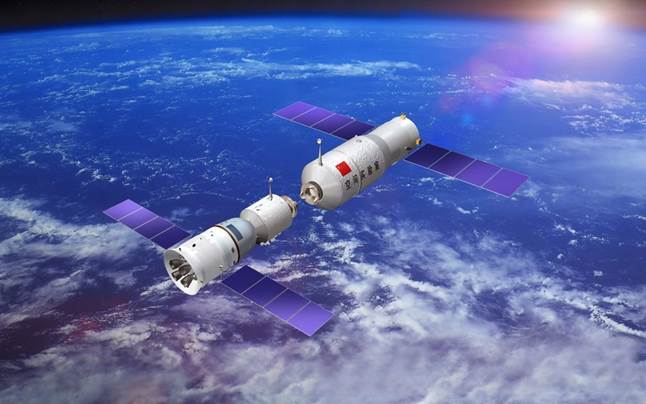
A drone with mass appeal
In recent years, drones have become smarter flyers, faster racers and better photographers. But for the most part, they’re still too big and bulky to carry around comfortably, which can turn off more-casual consumers. Not so with DJI’s Mavic Pro, which debuted in September; it’s got all the trimmings of a state-of-the-art drone—obstacle-avoidance technology, a 4K camera and the ability to track subjects while flying—but it can also fold down to the size of a loaf of bread, smaller than any of its competitors. Realizing that goal required DJI’s engineering team to “rethink all the aspects” of a typical drone, says Darren Liccardo, who helped lead the project. But ultimately, he adds, the effort paid off: because of its smaller size, the Mavic Pro is more nimble and less prone to accidents—yet another selling point that could attract new users.
The no-touch thermometer
Anyone who has ever had a sick child knows what a hassle it can be to take someone’s temperature using the traditional method—slipping a thermometer under her tongue, getting her to sit still for minutes at a time and hoping that whatever reading you get is accurate. That’s why, in recent years, many brands have started to make no-touch thermometers, which use infrared technology to measure core body temperature quickly and precisely. But one model stands out both for its design and its efficacy: Arc’s InstaTemp (and its more precise, clinical version, InstaTemp MD), which was recently approved by the FDA. Once the device is placed roughly an inch from a patient’s forehead, it spits out a temperature in 2.5 seconds—coded red, yellow or green, depending on the reading. “If you can take a temperature this way, why would you do it any other way?” says Irwin Gross, CEO of Arc, which is marketing the InstaTemp devices to consumers and health care professionals alike. “We think this is the way all temperatures will be taken in the future.”
The artificial pancreas
In order for people with diabetes to stay healthy, they must continually check their blood sugar and adjust it with insulin or snacks. Medtronic aims to render this tedious process obsolete with its MiniMed 670G, a.k.a. the “artificial pancreas,” which has been in development for years but was only recently approved by the FDA. (It will be commercially available next year.) Once users attach the iPod-size device to their body, it measures their blood-sugar levels every five minutes, providing more insulin or withholding it as needed. For now, they still need to manually request a dose after they eat. But Medtronic is working on a fully automated version, which Fran Kaufman, chief medical officer of the company’s diabetes group, says she hopes will help the 1.25 million people living with Type 1 diabetes “spend less time managing their disease and more time enjoying life.”
China’s ‘heavenly’ space station
When China’s newest astronauts, Jing Haipeng and Chen Dong, arrived in orbit earlier this year, they docked at some impressive digs. Specifically: the orbital laboratory Tiangong-2 (Heavenly Palace 2), which is more than 34 ft. long and nearly 14 ft. wide and includes an exercise area and a medical-experiment bay. Yes, that’s all modest compared with the multimodule International Space Station (ISS), which is roughly the size of a football field, but it’s a remarkable machine all the same. China, after all, built Tiangong-2 on its own, just over a decade after launching its first man into space; the ISS is a collaboration among 15 nations, including space veterans like the U.S. and Russia. China’s next move: launching the core module for a much bigger space station, set to happen sometime in 2018.
A prosthesis that’s built to play
By design, most prostheses aren’t fun—they’re built to fill a utilitarian need. And while that’s fine for adults, who need to work, it can be tough on kids, who want to play along with their friends. Enter Iko, a prosthetic arm built by Carlos Arturo Torres to enable children to replace a lost limb with one that could have come from Inspector Gadget. When they need a hand, they have one. But they can replace it with any number of toy-like attachments, all of which are compatible with Lego products. (Torres developed the device while working at Lego’s experimental Future Lab in Denmark.) Torres is still finalizing distribution details, but his larger hope is that Iko will destigmatize disability—like it did for 8-year-old Dario, an early tester. Before the test, one of Dario’s friends told Torres he felt sorry for Dario, because there were things he couldn’t do. That changed after the friend watched Dario use Iko. “I want one too,” he said.
A bracelet that helps kids give back
One in four American children doesn’t get enough exercise, and 1 in 4 children globally doesn’t get enough food. UNICEF’s Fitbit-like Kid Power Band, designed by San Francisco-based Ammunition, aims to address both problems at once. Its mobile app encourages kids to be physically active with videos from stars like Pink and Alex Morgan. Once they meet step goals, it awards them points, which translate to real food packages that UNICEF sends to malnourished children all over the globe (funded in part by sales of the device). The band “allows kids to feel like they can change the world,” says Rajesh Anandan, who co-created it. Since Kid Power Band’s soft launch in 2014, participants have collectively walked over 7 million miles to feed more than 30,000 severely malnourished children.
Headphones that make wireless cool
Apple has a history of changing the technological status quo, from digitizing music to making phone screens touch-sensitive. So when the tech titan announced that its iPhone 7 would not have a 3.5-mm headphone jack, which has been standard on most audio gadgets for decades, it also previewed a compelling alternative. Unlike many of their Bluetooth predecessors, Apple’s AirPods not only have microphones (enabling you to control your phone via Siri) but also can detect when they’re in your ears—allowing you to automatically pause music, for example, if you pop one out to have a conversation. But their most convenient feature may be automatically pairing with an iPhone, which eliminates the need to dig through settings menus.


